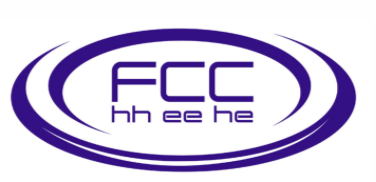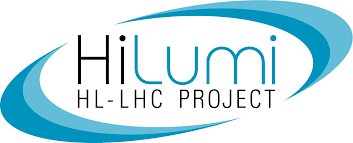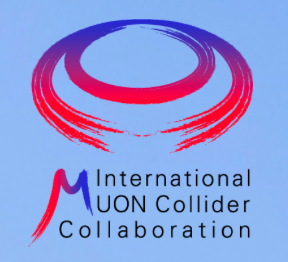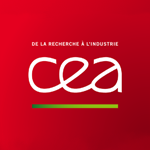Related Projects
Accelerator projects
FCC: Future Circular Collider The Future Circular Collider (FCC) design study explores options for accelerator projects in a global context, with emphasis on proton-proton and electron-positron high-energy frontier machines. These design studies are coupled to a vigorous accelerator R&D programme, including high-field magnets and high-gradient accelerating structures, in collaboration with national institutes, laboratories and universities worldwide. | |
| HL-LHC:The High Luminosity Large Hadron Collider The High Luminosity Large Hadron Collider (HL-LHC) is an upgrade of the LHC which aims to achieve instantaneous luminosities a factor of five larger than the LHC nominal value, thereby enabling the experiments to enlarge their data sample by one order of magnitude compared with the LHC baseline programme |
Muon collider: Muon colliders Muon colliders have a great potential for high-energy physics. They can offer collisions of point-like particles at very high energies, since muons can be accelerated in a ring without limitation from synchrotron radiation. However, the need for high luminosity faces technical challenges which arise from the short muon lifetime at rest and the difficulty of producing large numbers of muons in bunches with small emittance. Addressing these challenges requires the development of innovative concepts and demanding technologies | |
VLHC: VERY LARGE HADRON COLLIDER
R&D efforts beginning in 1995 and continuing part way through 2002 at Fermilab aimed at the development of a low-field superferric transmission line magnet for the VLHC.
Magnet Projects and R&D
| The Frédéric Joliot Institute for Life Sciences was set up on 1st February 2017. Philippe Vernier is the director since October 1, 2019. Annie Rivoallan is the deputy director of the institute. They are assisted by Sylvaine Gasparini, Science Officer and Eliane Deck-Chaumont, Administrative Assistant. |
|
ITER (“The Way” in Latin) is one of the most ambitious energy projects in the world today. |
| The U.S. Magnet Development Program, led by Berkeley Lab, aggressively pursues the development of superconducting accelerator magnets that operate as closely as possible to the fundamental limits. | |
| The DEMOnstration power plant, DEMO, will be ITER’s successor. With the transition from ITER to DEMO, fusion will go from a science-driven, lab-based exercise to an industry-driven and technology-driven programme. A key criterion for DEMO is the production of electricity, although not at the price and the quantities of commercial power plants. Laying the foundation for DEMO is the objective of the EUROfusion Fusion Technology Programme. | |
| JT-60SA is a joint international fusion experiment being built and operated by Japan and Europe, in Naka, Japan, using infrastructure of the previous JT-60 Upgrade experiment alongside new hardware. SA stands for “super, advanced”, since the experiment will have superconducting coils and study advanced modes of plasma operation. |
| The DTT project was proposed in 2015 by about one hundred scientists from several Italian institutions (ENEA and its Third Parties), with the support of two EU labs (KIT, Germany; IPPLM, Poland), and the collaboration of scientists from various international labs (including CEA-IRFM, France; CRPP-EFPL, Switzerland; FOM-DIFFER, the Netherlands; IPPLM, Poland). The results were collected in “DTT-Divertor Tokamak Test facility. Project Proposal”, ISBN 978-88-8286-318-0, published in 2015 (DTT “Blue Book”). |
| The IRFM is an Institute of the Directorate of Fundamental Research of the CEA. Located on the Cadarache Center in southern France, it brings together about 250 people working on a new source of energy: fusion by magnetic confinement. The mastery of nuclear Fusion and the construction of the ITER tokamak will inevitably involve a number of challenges. The WEST tokamak is dealing with one of them already: the divertor. WEST (acronym derived from W Environment in Steady-state Tokamak, where W is the chemical symbol for tungsten) is the transformation of the Tore Supra tokamak from a limiter to a divertor configuration. | |
| The MIT Plasma Science & Fusion Center in collaboration with private fusion startup Commonwealth Fusion Systems (CFS). is developing a conceptual design for SPARC, a compact, high-field, net fusion energy device. SPARC would be the size of existing mid-sized fusion devices, but with a much stronger magnetic field. Based on established physics, the device is predicted to produce 50-100 MW of fusion power, achieving fusion gain, Q, greater than 10. Such an experiment would be the first demonstration of net energy gain and would validate the promise of high-field devices built with new superconducting technology. SPARC fits into an overall strategy of speeding up fusion development by using new high-field, high-temperature superconducting (HTS) magnets. | |
Laboratories and Universities
| The Laboratoire National des Champs Magnétiques Intenses (LNCMI) is a research infrastructure welcoming researchers from around the world for high magnetic field experiments. At two sites, LNCMI offers continuous fields in Grenoble (LNCMI-G) and pulsed fields in Toulouse (LNCMI-T). |
| The Helmholtz-Zentrum Dresden-Rossendorf is a member of the Helmholtz Association of German Research Centres pursuing new insights that will allow us to maintain and improve all of our lives. |
HFMLT: The High Field Magnet Laboratory The High Field Magnet Laboratory develops the world’s highest static magnetic fields. Scientists use these magnetic fields to explore (new) material and their properties. This fundamental knowledge is a driving force behind innovation. | |
| The National High Magnetic Field Laboratory is the largest and highest-powered magnet lab in the world. Funded by the National Science Foundation and the state of Florida, each year more than 2,000 scientists come from across the globe to use our facilities at Florida State University, the University of Florida and Los Alamos National Laboratory to probe fundamental questions about materials energy and life. | |
| The High Magnetic Field Laboratory, Chinese Academy of Sciences (CHMFL) is located in Hefei, the capital city of Anhui province. Development of the lab started in May, 2008 and is now almost complete. The project includes construction of a hybrid magnet, five high power resistive magnets and four superconducting magnets. To support normal operation of these magnets, some supporting systems have been constructed for the resistive magnets: a 28MW high stability power supply, a 20 MW water-cooling system, and a central control system. A cryogenic system supplies liquid helium for the superconducting magnets, the hybrid magnet, and general experimental use. State-of-the-art measurement systems have been purchased or are being developed. When complete, CHMFL will be a National Research Center in China for multi-disciplinary studies in fixed and slowly varying high magnetic fields. |
| Tsukuba Magnet Laboratory (TML) is one of the largest high magnetic field facilities in the world. TML is capable of generating highest steady magnetic field and is engaged in the development of technology utilizing magnetic fields. |
| The Institute for Materials Research (IMR) contributes to human civilization and well-being through the creation and application of truly useful materials by research on metals, semiconductors, ceramics, organics, and many others, including its compounds, composites, and structures. | |
| The Plasma Science and Fusion Center (PSFC) seeks to provide research and educational opportunities for expanding the scientific understanding of the physics of plasmas, and to use that knowledge to develop both fusion power and non-fusion applications | |
| CHART (Swiss Accelerator Research and Technology) was founded in 2016 as un umbrella collaboration for accelerator research and technology activities in Switzerland. Present partners in CHART are CERN, PSI, EPFL, ETH-Zurich, and the University of Geneva. |


















